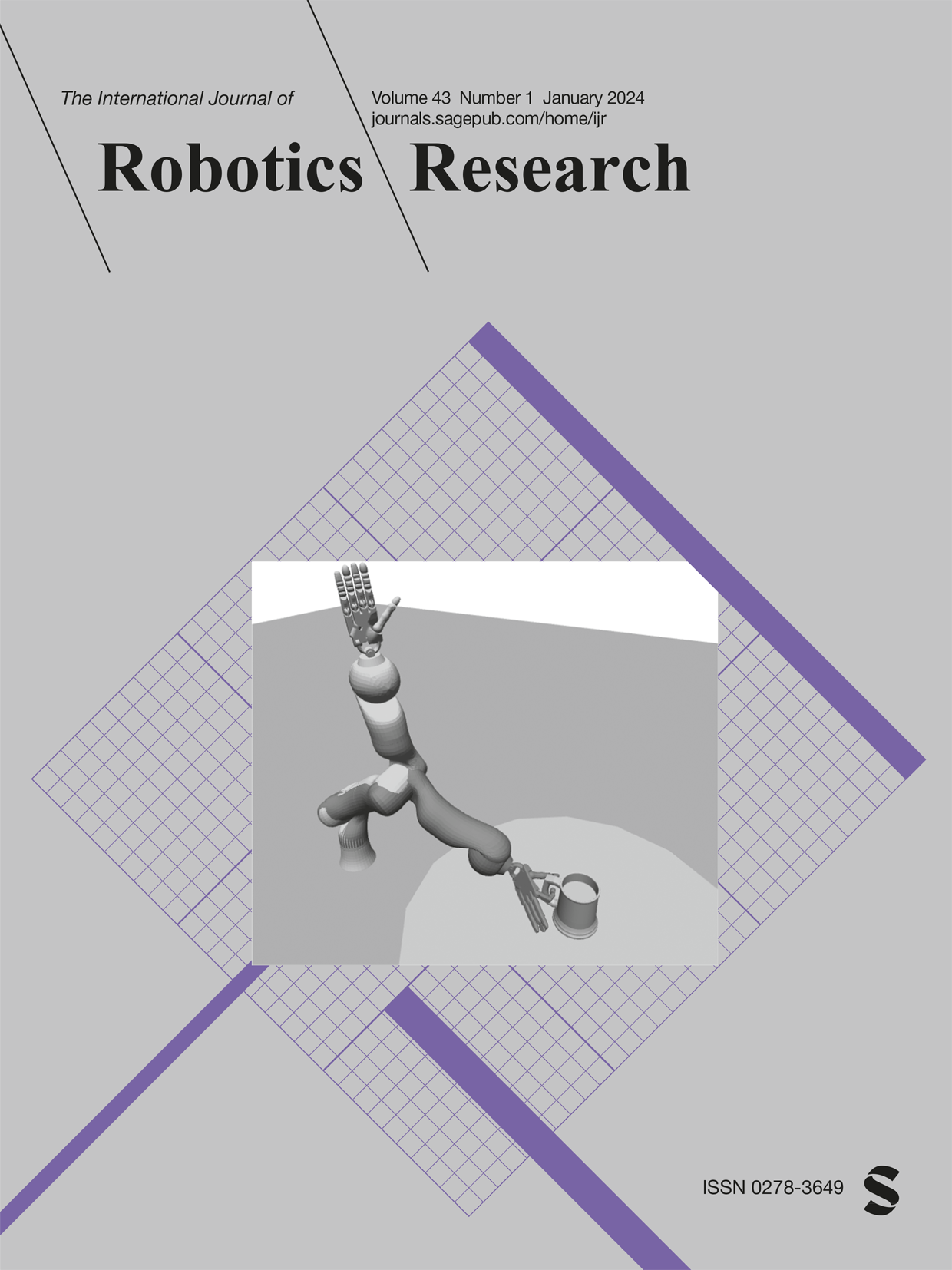机器人大脑的数学表征
IF 5
1区 计算机科学
Q1 ROBOTICS
引用次数: 0
摘要
本文讨论了编码和处理通过内部系统(机器人算法或软件)和外部系统(机器人身体及其环境)在行动和观察历史方面的相互作用获得的信息的下限。两者都被建模为转换系统。我们想知道最弱的内部系统,它足以实现被动(过滤)和主动(计划)任务。我们为内部系统引入了信息转换系统(ITS)的概念,这是一个基于有限感知、记忆、计算和驱动的反映机器人或其他观察者视角的信息状态空间的转换系统。将ITS视为过滤器,将策略或计划视为标记该ITS状态的功能。无论内部系统是通过学习算法、规划算法还是人类洞察力获得的,我们都想知道给定机器人硬件和任务的可行性极限。在一般情况下,我们建立了最小信息转换系统(ITSs)在合理的等价假设下存在,并且在某些一般条件下是唯一的。然后,我们应用该理论对几个问题产生新的见解,包括最优传感器融合/滤波,解决基本规划任务,以及为给定输入输出关系的系统建模找到最小表示。本文章由计算机程序翻译,如有差异,请以英文原文为准。
A mathematical characterization of minimally sufficient robot brains
This paper addresses the lower limits of encoding and processing the information acquired through interactions between an internal system (robot algorithms or software) and an external system (robot body and its environment) in terms of action and observation histories. Both are modeled as transition systems. We want to know the weakest internal system that is sufficient for achieving passive (filtering) and active (planning) tasks. We introduce the notion of an information transition system (ITS) for the internal system which is a transition system over a space of information states that reflect a robot’s or other observer’s perspective based on limited sensing, memory, computation, and actuation. An ITS is viewed as a filter and a policy or plan is viewed as a function that labels the states of this ITS. Regardless of whether internal systems are obtained by learning algorithms, planning algorithms, or human insight, we want to know the limits of feasibility for given robot hardware and tasks. We establish, in a general setting, that minimal information transition systems (ITSs) exist up to reasonable equivalence assumptions, and are unique under some general conditions. We then apply the theory to generate new insights into several problems, including optimal sensor fusion/filtering, solving basic planning tasks, and finding minimal representations for modeling a system given input-output relations.
求助全文
通过发布文献求助,成功后即可免费获取论文全文。
去求助
来源期刊
CiteScore
22.20
自引率
0.00%
发文量
34
审稿时长
6-12 weeks
期刊介绍:
The International Journal of Robotics Research (IJRR) has been a leading peer-reviewed publication in the field for over two decades. It holds the distinction of being the first scholarly journal dedicated to robotics research.
IJRR presents cutting-edge and thought-provoking original research papers, articles, and reviews that delve into groundbreaking trends, technical advancements, and theoretical developments in robotics. Renowned scholars and practitioners contribute to its content, offering their expertise and insights. This journal covers a wide range of topics, going beyond narrow technical advancements to encompass various aspects of robotics.
The primary aim of IJRR is to publish work that has lasting value for the scientific and technological advancement of the field. Only original, robust, and practical research that can serve as a foundation for further progress is considered for publication. The focus is on producing content that will remain valuable and relevant over time.
In summary, IJRR stands as a prestigious publication that drives innovation and knowledge in robotics research.

 求助内容:
求助内容: 应助结果提醒方式:
应助结果提醒方式:


